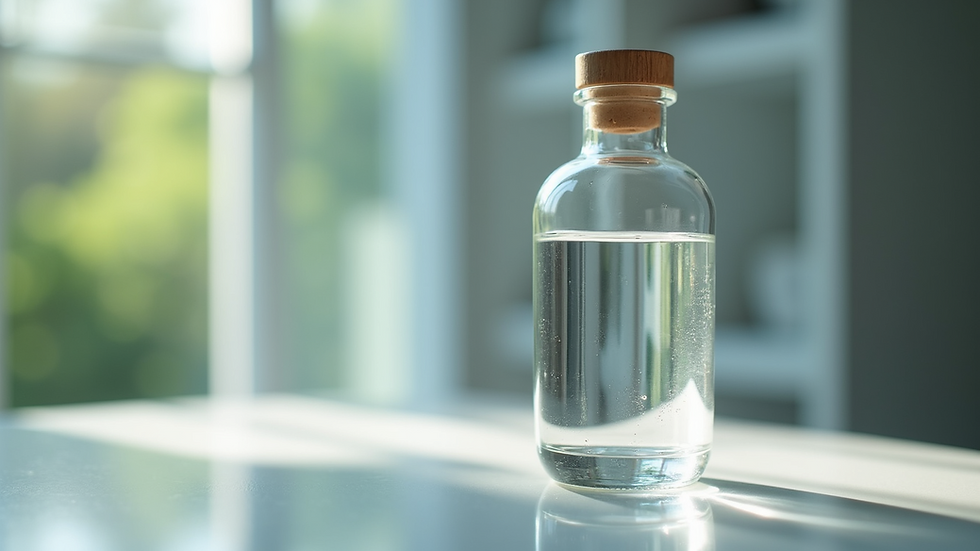Perfume Making with Enigmatic Perfumery Grade Ethyl Alcohol
- subalaoffice
- Aug 4
- 4 min read
Creating your own perfume opens the door to a magical world of scents and fragrances. Each blend tells a unique story, stirring emotions and evoking memories. Central to this art is an essential ingredient, Perfumery Grade Ethyl Alcohol. With its impressive purity and adaptability, it serves as the foundation for countless fragrant creations. Let’s explore the captivating realm of perfume making and uncover the secrets of using perfumery grade ethyl alcohol!
The Allure of Perfume Making
Perfume crafting goes beyond being a simple hobby; it is a form of art that enables you to express your personality. Each blend has the power to transport you to places filled with nostalgia or inspiration. This is why DIY projects are booming, fueling a newfound interest in creating personalized fragrances that reflect individual style. Reports indicate that the DIY beauty market is growing significantly, projected to reach over $13 billion by 2028.
Whether you are a curious beginner ready to dive into the craft or a seasoned perfumer looking to elevate your skills, understanding the role of high-quality alcohol in perfume creation is crucial. This is where Perfumery Grade Ethyl Alcohol comes into play.
What is Perfumery Grade Ethyl Alcohol?
Perfumery Grade Ethyl Alcohol, often referred to as ethanol denatured for fragrance production, is a high-purity ethanol (99.9%) specially formulated for crafting perfumes. This top-notch quality ensures that your creations result in a long-lasting scent profile that remains true to the intended fragrance, free from any unwanted elements.
Using the right base is vital—it significantly influences the success of your perfume. This alcohol functions as a solvent, seamlessly blending essential and fragrance oils, ultimately helping you develop your perfect signature scent.
Benefits of Using Perfumery Grade Ethyl Alcohol
1. High Purity for Authentic Scents
The exceptional purity of this ethyl alcohol means that every note in your perfume is recognizable and authentic. A clear base like this one creates an ideal canvas, ensuring that the essence of your chosen oils is preserved. Research shows that perfumes made with high-purity alcohol can have a longevity rate of nearly 50% longer than those made with lower quality bases.
2. Versatile Mixing
One of the standout features of perfumery grade ethyl alcohol is its flexibility. It blends smoothly with both essential and fragrance oils, allowing you to fine-tune the intensity and longevity of your scent. Whether you prefer a light floral aroma or a rich, musky scent, this alcohol adapts to your creative vision.
3. User-Friendly Experience
Venturing into perfume making can appear intimidating, yet with Perfumery Grade Ethyl Alcohol, the process is straightforward. Its formulation is designed for all skill levels, ensuring that beginners and seasoned creators alike have an enjoyable blending experience.

4. DIY Crafting Trend
In recent years, DIY beauty projects have soared as more people seek personalized options over mass-produced alternatives. The appeal of crafting your fragrance aligns perfectly with this trend, allowing you to create something that uniquely represents who you are.
5. Entrepreneurial Opportunities
For aspiring entrepreneurs, perfumery grade ethyl alcohol opens up avenues to start a custom fragrance business. With creativity and a personal touch, anyone can harness this product to embark on a scent-making journey and potentially launch a brand of exclusive perfumes.
Crafting Your Signature Scent
Equipped with a knowledge of the benefits, how do you craft your fragrance masterpiece? Here’s a simple guide to help you create a signature scent.
Step 1: Gather Your Ingredients
To start your perfume creation, you’ll need the following:
Perfumery Grade Ethyl Alcohol (high purity for a clean scent)
Essential or fragrance oils (choose according to your desired scent)
A small glass bottle (for mixing your ingredients)
A dropper (to measure the oil amounts accurately)
Step 2: Experiment with Scent Blending
Begin by layering various essential and fragrance oils in your glass bottle. Start with a few drops of base notes (like sandalwood or vanilla) and gradually add middle notes (like jasmine or rose) and top notes (like lemon or orange).
Remember, the magic of perfumery lies in experimentation. Feel free to mix and match until you find the blend you love!
Step 3: Mix with Ethyl Alcohol
Once satisfied with your chosen aroma, add perfumery grade ethyl alcohol to your blend. A recommended starting ratio is 2 parts alcohol to 1 part fragrance oil, but adjust this according to your preference.
Step 4: Let It Mature
Allow your perfume to rest for 48 hours to a couple of weeks. This maturation period enables the scents to meld beautifully, leading to a richer and more cohesive fragrance.
Step 5: Store Properly
Store your perfume in a cool, dark space. Opting for a stylish glass bottle not only enhances visual appeal but also protects your creation from light exposure, which can compromise its quality.
The Journey Ahead
Embarking on the journey of perfume making is an adventure filled with creativity and personal expression. With Perfumery Grade Ethyl Alcohol as your foundation, you are ready to create a fragrance that is distinctively yours. The high purity and flexibility of this alcohol enhance your scents and align with the growing trend of DIY beauty solutions.
As you dive deeper into the enchanting world of fragrances, remember that each bottle contains a story—one that perfectly represents you. Whether indulging in a delightful hobby or pursuing a new venture in the fragrance industry, exploring this art will surely bring unforgettable experiences.
So, pick up your bottle of perfumery grade ethyl alcohol, channel your creativity, and unlock a realm of fascinating scents waiting to be discovered! Happy crafting!





Comments